
|
Alliaj HM: F3F Model of the year 2010 ! Pierre
Rondel |
Introduction
The Alliaj HM is the new flag ship of Aeromod, designed by Jean-Luc Foucher, milled by Thomas Mintzior and manufactured by Alexis Maréchal, Mr Aeromod. Initially, I was not planning to buy one, but after seing it during the F3F contest of "Le Col du Glandon" end of 2009 , I felt that it was a promising plane, especially for energy management turns that I was learning at that time, so I decided to give a try. Year 2010 was for me as I was member of the french team participating to the Viking Race. Therefore the choice of the plane was critical. Why, because at the opposite of lots of pilots, I still believe that the plane can participate at 30% of the result, not less !
Design
The requirements were to combine maneuverability, finesse, and very good turn lift that allows to fly energy management turn style. The development put the focus on the airfoil optimization including the extensive use of the flaps. The goal was to obtain a wide Cx in order to reach a excellent tolerance to settings and flying conditions. All flight parameters (Cz, Cx, Re,…) have been optimized for F3F thanks to the excel spreadsheet associated to the article called "Mécanique de Vol en F3F" (http://www.f3f-france.com/images/stories/Fichiers/PDF/f3fmecaniquedevol.pdf) and also some analysis done about dynamic soaring. Some interesting inputs have also been collected from all the articles or discussions around F3F. The synthesis have been done on Profili, by adapting the section along the wing to take into account the objectives, but also the mechanical constraints. As a result no less than 19 airfoils have been calculated !! XFLR5 software allowed to perform the overall glider study and demonstrated that the objectives were reached on the paper in all flying areas.
The kit
The model has a 2 piece wing with the ailerons and flaps already hinged and the servo holes cut out. The wing joiner is made of a square carbon section that can take 2 preformed square ballast. The fuselage is made from carbon with a carbon front or a glass front (for 2.4ghz radios). It also has a ballast tube in the fuselage ready to fill with ballast. 2 options here: You can go for 5 x slugs tubes made of iron (ready to be filled with lead) or better, 7 Tungsten ballast slugs (~200 gr each) - 2 x Brass square sections ballast for the wing joiner (330 gr each)
Assembly
I will not develop this section as the assembly follows the standards. I will only focus on the points of details. I didn't follow the recommendation of the manufacturer to use the vertical servo tray provided in the kit, which is freeing lots of space in the nose, but make the elevator servos less accessible. I preferred to build a normal servos tray using 4mm plywood. The difficulty was that because of the ballast tube, I needed to carefully position the servos and superpose the control rods. This was made even more trickier because of the dimensions of the InoLab HGD250MG.

 The
receiver is a Jeti Duplex R8 which takes place in front of the servos. The battery
is a 5 x Eneloop AA cells with a Greentronic linear voltage regulator. In the
wings, I used to setups. On my White/Milka Alliaj HM, I have Airtronics 94761Z
servos on the flaps and Hyperion DS095FMD on the ailerons where, on the yellow/orange
Alliaj HM, I use Airtronics 94761Z servos on the flaps and ailerons.
The
receiver is a Jeti Duplex R8 which takes place in front of the servos. The battery
is a 5 x Eneloop AA cells with a Greentronic linear voltage regulator. In the
wings, I used to setups. On my White/Milka Alliaj HM, I have Airtronics 94761Z
servos on the flaps and Hyperion DS095FMD on the ailerons where, on the yellow/orange
Alliaj HM, I use Airtronics 94761Z servos on the flaps and ailerons.
In both planes, I use servorahmen frames. There is no specific frame for the Hyperion DS095FMD, so I started from a Graupner DS3210 frame that I modified. Regarding the control horn on the flap, some builders prefer to integrate everything but I preferred to do different because I don't want any slope on the command. I position the horn to have the hole just on top of the surface of the skin.
Control rods are made from 2.5 threaded rod and metal clevises. I replaced the provided covers by transparent servo covers sold by Samba Model. This allows to have a quick look at the servos if needed without having to open the cover.
I needed only 73gr of lead to obtain the 87-88mm CG. Final empty weight of my 2 Alliaj HMs is around 2380 grams. The ballast can be 660gr in the joiner and 1400gr in the fuselage, so a total of 2060gr, which makes a fully ballasted weight of 4440gr !!!!!!
Settings
In the air
 Well,
I think that after this 2010 F3F season, results speak by themselves: La Muela
FAI win, Viking Race win (3 Alliaj HM in the top 4 !!!), French Vice champion
(3 Alliaj HM on the podium !!!), new French record in 29,92s. The AlliaJ HM
really looks like to be the 5 legged sheep all F3F competitors are looking for
…
Well,
I think that after this 2010 F3F season, results speak by themselves: La Muela
FAI win, Viking Race win (3 Alliaj HM in the top 4 !!!), French Vice champion
(3 Alliaj HM on the podium !!!), new French record in 29,92s. The AlliaJ HM
really looks like to be the 5 legged sheep all F3F competitors are looking for
…
It flies quite fast in light air, still providing good grip in turn, and flies as a rocket in good to strong air. The more speed the plane has, the more stability it gives, which is pretty good when you want to break records. At the first flight of me second Alliaj HM, I just did a 34s run, and felt very confident and quiet because the trajectories were smooth.
The center panel being flat, the plane almost looks like a seagull wing in the air. Some people dislikes. To be honest, I’m not a fan of that unusual look, but for me the most important is performances first, and there is no doubt on that side !!!
Another specificity of the Alliaj HM is that you can ballast it as crazy: you start early, as soon as you reach 4 to 5m/s by putting 1 slug. Then you add ballast gradually (but not linear) with the wind speed. For information, when I broke the French record I was carrying 1530 g of ballast. I didn’t go above 1600gr yet, but I know that the plane can carry them.
The only recommendation I would have is to be careful when landing with lots of ballast (more than 1200gr) and keep a little horizontal speed to limit the vertical speed that could damage the plane. This said, The Alliaj HM remains a very strong and stiff plane thanks to the construction method.
Conclusion
As I said in the title, the Alliaj HM is for me without any doubt the F3F plane of the year 2010. It trusted many contest podiums, both national or international. It delivers the same feeling to all pilots: easy handling and performance in any flying conditions.
An interresting video about the milling of the Alliaj HM:
To illustrate Alliaj HM capabilities, here are some videos gathered during the season 2010:
French F3F Record: 29.92 seconds from Pierre Rondel on Vimeo.
DSing the Alliaj HM from Pierre Rondel on Vimeo.
F3F from inside from Pierre Rondel on Vimeo.
Extreme F3F from Pierre Rondel on Vimeo.
 |
 |
 |
 |
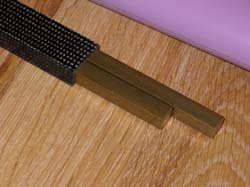 |
 |
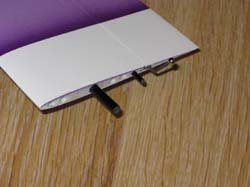 |
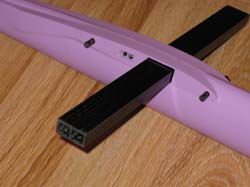 |
 |
 |
 |
 |
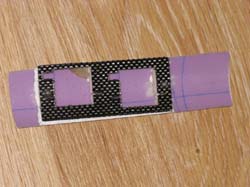 |
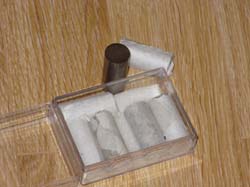 |
 |
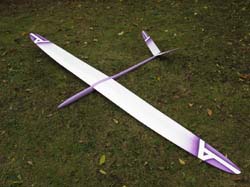 |
 |
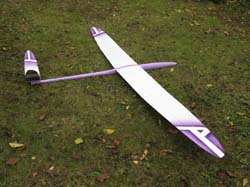 |
 |
 |
 |
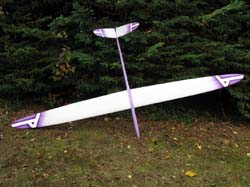 |
 |
 |
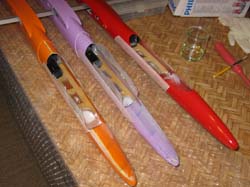 |
 |
 |
 |
 |
 |
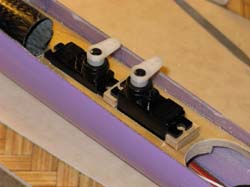 |
 |
 |
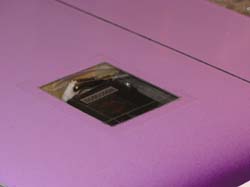 |
 |
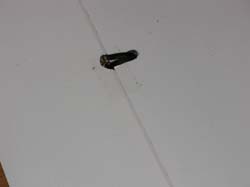 |
 |
 |
 |
 |
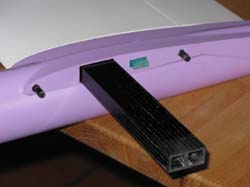 |
 |
 |
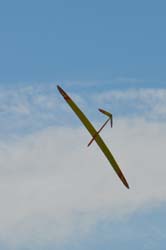 |
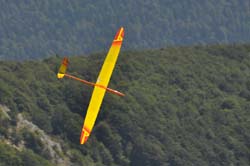 |
 |
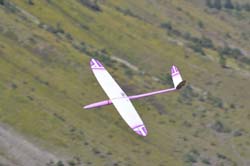 |
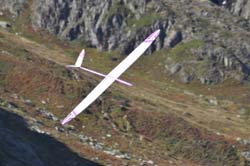 |
 |
 |
 |
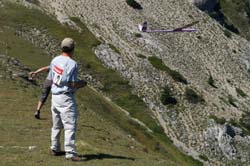 |
 |
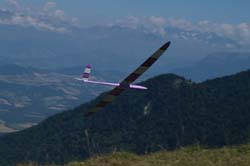 |
 |
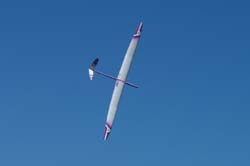 |
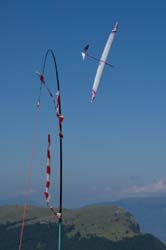 |
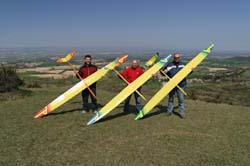 |
 |
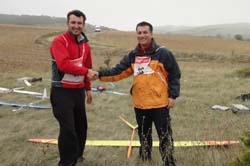 |
 |
Copyright
© 1998 - 2010 Planet-Soaring.com
No commercial use or publication (e.g. on
other www or ftp sites, print media) without the written consent from the
author(s)